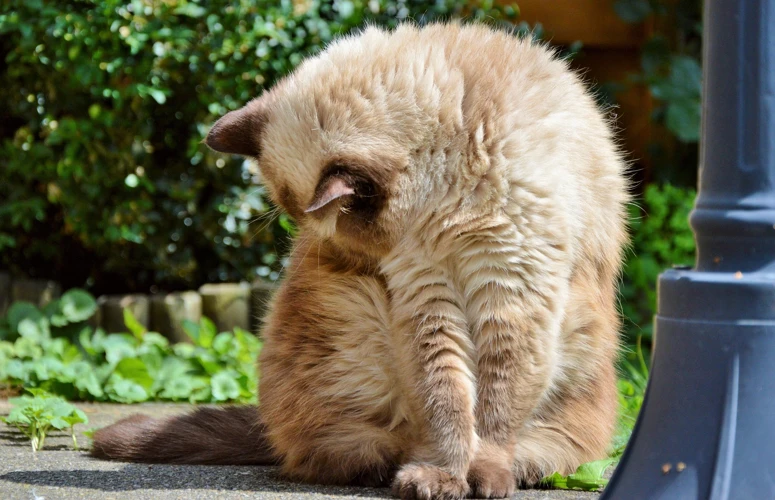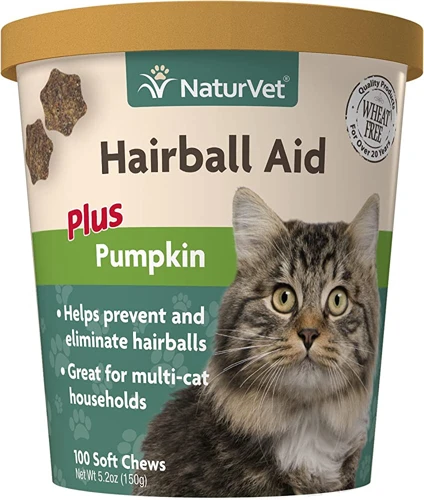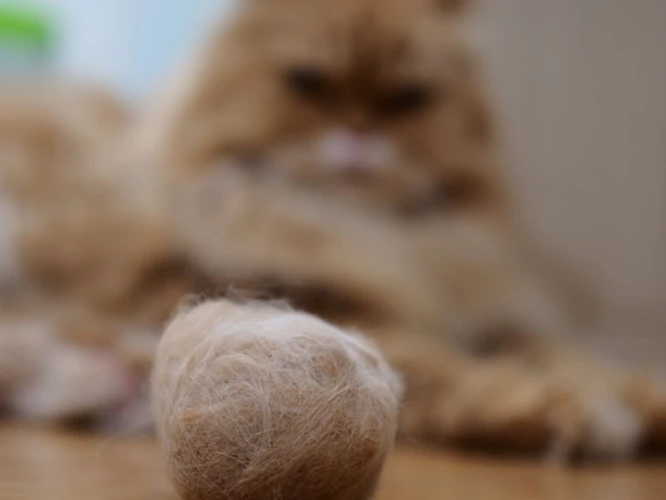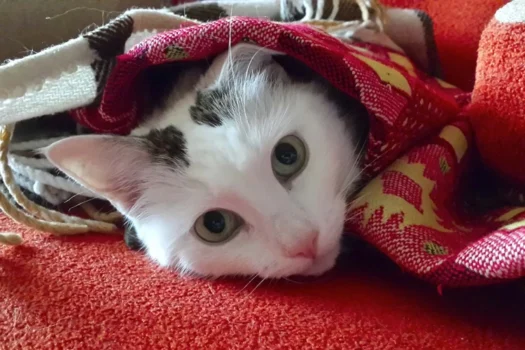As a cat owner, you may have noticed your furry friend coughing up hairballs every once in a while. While it is a common occurrence, it can be quite unsettling to witness. Hairballs can be uncomfortable for your feline friend and can lead to serious health problems if not managed properly. If you own an American Shorthair cat, you may be wondering how to prevent or treat this issue. In this article, we will explore the causes and symptoms of hairballs, as well as tips and solutions for managing hairballs in American Shorthair cats. So sit tight, grab a cup of tea, and let’s dive in.
What are Hairballs?

What causes cats to cough up those unpleasant hairballs? Hairballs are a common issue among many cat breeds, including American Shorthairs. However, despite being considered a standard part of a cat’s life, hairballs can lead to various complications. As a cat owner, it’s essential to know what causes hairballs, how to prevent them, and when to seek medical attention. In the proceeding sections, we will explore the causes, symptoms, prevention, and treatment of hairballs, including tips and solutions to manage hairballs in American Shorthair Cats. For more information on cat health, check out our article on feline lower urinary tract disease in shorthair cats.
Symptoms of Hairballs
Some of the symptoms of hairballs in American Shorthair Cats include:
- Excessive grooming
- Coughing, gagging, or retching, especially after meals
- Constipation or diarrhea
- Loss of appetite
- Lethargy or general malaise
These symptoms can be indicative of many different issues, so it’s important to keep a close watch on your cat’s behavior. If you notice any of these symptoms persisting or getting worse, it’s best to take your cat to the vet to assess the problem. It’s important to note that frequent coughing or gagging could also be a sign of dental issues, so be sure to consult our article on dental problems in cats if you suspect this may be the case.
Regularly brushing your cat can help minimize hairballs and reduce symptoms of excessive grooming. Read on to learn more about how to prevent and treat hairballs in American Shorthair Cats. Additionally, make sure to schedule regular check-ups for your cat to ensure overall good health and catch any issues early on. Check out our article on regular wellness check-ups for cats to learn more.
Causes of Hairballs
Hairballs are a common occurrence in cats, including the American Shorthair breed. They form when cats ingest hair while grooming themselves, which accumulates in their stomachs and cannot be digested. This leads to vomiting and the expulsion of the hairball. However, hairballs are not a natural aspect of a cat’s physiology and can be prevented with proper care.
The causes of hairballs in American Shorthair cats include:
- Ingesting too much hair: Cats that excessively groom themselves are more likely to develop hairballs. This may be due to anxiety or boredom, so ensure that your cat has a stimulating environment and adequate playtime to distract them from excessive grooming.
- Diet: Poor-quality food can result in hairballs as a cat’s body may not be able to break down the ingested hair efficiently. It’s important to feed your cat a high-quality, balanced diet that meets their nutritional needs.
- Dehydration: Cats who aren’t receiving enough water are at a higher risk of developing hairballs. Encourage your cat to drink water by providing clean, fresh water in multiple bowls around your home and considering investing in a cat water fountain.
- Frequent shedding: Cats shed hair naturally, and some breeds, like the American Shorthair, shed more than others. Regular grooming can help pick up loose hair, reducing the amount that your cat ingests while grooming.
If your cat is experiencing frequent hairballs, it’s important to address the underlying cause to prevent further health issues. In addition to preventing hairballs, being proactive about your American Shorthair cat’s health can help prevent other health issues such as obesity, infectious diseases, and dehydration.
Preventing Hairballs

As a cat owner, one of your most pressing concerns is keeping your American Shorthair cat healthy and happy. While hairballs in cats are a common occurrence, they can be both uncomfortable and dangerous if they get stuck in your pet’s digestive tract. There are steps you can take to prevent hairballs from forming in the first place, and thus avoiding unnecessary discomfort for your furry friend. Below, we’ll discuss some preventative measures you can take to keep your American Shorthair healthy.
Regular Brushing
Regular brushing of your American Shorthair cat can do wonders for preventing hairballs. Not only does it reduce the amount of loose fur they ingest while grooming themselves but it can also be a bonding experience between you and your furry friend. However, it’s important to brush your cat properly to avoid causing discomfort or stress.
How often should I brush my cat?
The frequency of brushing depends on the length and thickness of your cat’s fur. For American Shorthair cats, a once or twice-weekly brushing session is usually enough. For those with longer fur, daily brushing may be necessary.
What tools should I use?
Different types of brushes and combs work best for different types of fur. For American Shorthair cats, a slicker brush or a shedding comb works best. A dematting tool can also come in handy if your cat has a lot of tangles or mats in their fur.
How do I brush my cat?
To properly brush your cat, follow these steps:
| Step 1: | Start by getting your cat comfortable and relaxed. This can include giving them treats or petting them gently. |
| Step 2: | Gently pet your cat with your hand or a soft brush to get them used to being touched. |
| Step 3: | Start brushing in the direction of your cat’s fur growth, using long and gentle strokes. Avoid pressing too hard or pulling on any tangles or mats. |
| Step 4: | If you encounter any tangles or mats, use a dematting tool or detangling spray to work them out slowly and carefully. |
| Step 5: | Once you have brushed your cat’s entire body, give them a break or a treat to reward them for their cooperation. |
Remember to be patient and gentle while brushing your American Shorthair cat. If they become too agitated or start to bite or scratch, take a break and try again later. Regular brushing can help prevent hairballs, but only if it is done properly and consistently.
Do you want to learn more about managing health issues in American Shorthair cats? Check out our article on Allergies in American Shorthair Cats.
Avoiding Overfeeding
Avoiding Overfeeding
Overfeeding is a common issue that can lead to hairballs in American Shorthair cats. When cats eat more than they should, their bodies tend to produce excess hair which can’t be digested properly. This extra hair then accumulates in the digestive system, causing hairballs to form. One way to avoid overfeeding is by:
- Feeding your cat smaller portions that are appropriate for its size and weight.
- Using measuring cups for meals, instead of guessing how much food to put in the bowl.
- Avoid giving your cat too many treats as they can be high in calories and contribute to overfeeding.
It’s important to keep in mind that each cat has different dietary requirements based on their age, weight, and activity level, so it’s best to consult with your veterinarian for personalized feeding recommendations. Additionally, maintaining your cat’s healthy weight can prevent a host of other issues such as feline arthritis. If your cat is already overweight, you can explore tips on managing and preventing feline obesity in our related article here.
Overfeeding can also lead to other health issues like asthma, which can worsen hairballs. For guidance on managing asthmatic cats, read our article on asthmatic cats management tips.
Proper diet and feeding habits can go a long way in preventing hairballs in American Shorthair cats. By avoiding overfeeding, you can help your furry friend stay healthy and happy.
Hydration
Ensuring that your American Shorthair cat is well-hydrated is a crucial step in preventing hairballs. When your cat is well-hydrated, it helps to keep their digestive system functioning properly, which can prevent hairballs from forming in the first place. Additionally, hydration can help hairballs pass more easily through your cat’s digestive system.
One way to ensure your cat is well-hydrated is to provide them with fresh, clean water. A good rule of thumb is to provide your cat with one ounce of water per pound of body weight per day. However, every cat is different, and some may require more water than others. You can use this water intake calculator to determine how much water your cat needs based on their body weight.
Another way to increase your cat’s hydration is to provide them with wet food. Wet cat food contains more moisture than dry food, which can help keep your cat hydrated. When shopping for wet cat food, look for brands that are made with high-quality ingredients and avoid those that contain preservatives or artificial additives.
You can also consider incorporating water into your cat’s diet in other ways. For example, you can add a small amount of water to your cat’s dry food to help increase their hydration. Alternatively, you can provide your cat with a drinking fountain, which may encourage them to drink more water.
In addition to providing your cat with plenty of water, it is important to pay attention to their behavior. If you notice that your cat is not drinking as much water as usual or is showing signs of dehydration, such as lethargy or dry gums, you should consult with your veterinarian. Dehydration can cause serious health problems in cats, so it is important to address it as soon as possible.
Ensuring that your American Shorthair cat is well-hydrated is a key part of preventing hairballs. By providing them with fresh, clean water and incorporating moisture into their diet, you can help keep your cat healthy and happy for years to come.
| Body Weight | Water Intake per Day |
|---|---|
| 5 lbs | 5 oz |
| 10 lbs | 10 oz |
| 15 lbs | 15 oz |
| 20 lbs | 20 oz |
Treating Hairballs

Dealing with hairballs in your American Shorthair cat can be a challenging task, especially if they occur frequently. While regular brushing and a healthy diet can prevent hairballs from forming, they can still happen from time to time. When they do, it’s important to know how to manage and treat them effectively. In this section, we’ll explore some proven solutions for dealing with hairballs to keep your kitty happy and healthy. So let’s break down some of the most common remedies for hairballs, including commercial hairball treats, petroleum jelly, and fiber supplements.
Commercial Hairball Treats
Hairball treats are designed to help your American Shorthair cat minimize the hairballs they develop. These treats either contain special enzymes or oils that can help your cat pass hairballs naturally. They are readily available in pet stores and online, and some of the top commercial hairball treats are as follows:
| Product | Active Ingredient(s) | Benefits |
|---|---|---|
| Greenies Feline Smartbites Hairball Control Treats | Plant-based fibers (pea hulls, psyllium husk) | Promotes healthy digestion and natural passing of hairballs. Also helps reduce hairball formation. |
| Hartz Hairball Remedy Plus | Petroleum jelly, soybean oil, and beeswax | Hairball relief through natural lubrication, makes it easier for hairballs to pass. |
| Wellness Kittles Crunchy Natural Grain Free Cat Treats | Cranberries, blueberries, and fiber sources | Promotes healthy digestion and elimination, helps in the prevention of hairball formation, and supports overall cat wellness. |
Keep in mind that hairball treats should only be given to your cat as part of a balanced diet and should not be relied on as the sole solution to hairball problems. Always consult with your veterinarian to determine if commercial hairball treats are right for your American Shorthair cat and which brand is best suited for their specific needs.
Petroleum Jelly
One of the most commonly used remedies for treating hairballs in American Shorthair cats is the use of petroleum jelly. Essentially, petroleum jelly acts as a lubricant for your cat’s digestive tract, helping the hairball to move through their system more easily. This remedy is particularly effective for cats who struggle with chronic hairballs.
However, it is important to note that the use of petroleum jelly should be done with caution. While petroleum jelly is non-toxic, ingesting large amounts of it can cause digestive problems and potentially lead to more serious issues. It is important to use the correct amount of petroleum jelly and to administer it correctly.
How to Use Petroleum Jelly for Hairballs
When administering petroleum jelly to your American Shorthair cat, it is important to follow the correct procedure. First, make sure that you are using a food-grade petroleum jelly, as this will be the safest for your cat to ingest. Next, make sure that your cat is calm and relaxed before administering the jelly, as this will make the process easier for both you and your cat.
To administer the petroleum jelly, place a small amount (about the size of a pea) onto your finger and gently apply it to your cat’s paw. Your cat will naturally begin to lick the petroleum jelly off of their paw, which will help to lubricate their digestive tract and facilitate the passing of the hairball.
Other Considerations with Petroleum Jelly
While petroleum jelly can be an effective remedy for hairballs in American Shorthair cats, it is not a replacement for proper grooming and regular maintenance. Additionally, it is important to observe your cat after administering petroleum jelly to ensure that they do not experience any adverse reactions.
If your cat continues to struggle with hairballs despite regular grooming and maintenance, it is important to consult with your veterinarian to discuss other potential remedies and treatments.
| Pros | Cons |
|---|---|
| Effective for chronic hairballs | Potentially harmful if ingested in large amounts |
| Easy to administer | Not a replacement for regular grooming and maintenance |
| Food-grade petroleum jelly is safe for cats to ingest | May not be effective for all cats |
Petroleum jelly can be a useful remedy for hairballs in American Shorthair cats when administered correctly and in the appropriate amount. However, it is important to use caution and to observe your cat’s reactions to ensure that they do not experience any negative side effects.
Fiber Supplements
Adding fiber supplements to your American Shorthair cat’s diet can also help treat and prevent hairballs. Fiber helps move hair through the digestive tract, reducing the amount of hair your cat ingests while grooming. Here are some fiber supplements you can try:
- Pumpkin: This tasty supplement can be added to your cat’s wet food. Pumpkin is a great source of fiber and can help keep your cat’s digestive system regular.
- Bran: Wheat bran or oat bran can also be added to your cat’s food. Bran is high in fiber and can help provide relief from hairballs.
- Psyllium: This plant-based supplement can be mixed with your cat’s food or water. Psyllium is a natural source of fiber and can help keep your cat’s digestive system healthy.
When adding fiber supplements to your cat’s diet, it’s important to start slow and gradually increase the amount over time. This will help your cat adjust to the new supplement and prevent any digestive upset.
If your cat is having difficulty passing hairballs, adding fiber supplements to their diet along with other hairball remedies, such as regular brushing and hydration, can help provide relief. However, if your cat continues to experience hairball-related symptoms despite these interventions, it’s important to seek veterinary care. Your vet can assess your cat’s overall health and recommend additional treatments if necessary.
When to Call a Vet
It’s important to keep an eye on your American Shorthair cat when dealing with hairballs. If your cat is experiencing any signs of discomfort or if you notice any changes in your cat’s behavior or health, it’s important to seek professional help from a veterinarian. Here are some signs that indicate it’s time to take your cat to the vet:
Constipation: If your cat is having difficulty passing a stool, it could be a sign of a serious gastrointestinal condition. Hairballs can sometimes cause blockages in your cat’s digestive system, leading to constipation. A vet can perform an exam to determine the cause of constipation and recommend appropriate treatment.
Lack of Appetite: If your cat is refusing to eat or seems to have lost interest in food, this could signal a serious health issue. Hairballs, if left untreated, can cause irritation and inflammation in your cat’s digestive tract, leading to a loss of appetite. A vet can diagnose and treat the underlying cause of the loss of appetite and help your cat regain a healthy appetite.
Frequent Vomiting or Coughing: If your American Shorthair is vomiting or coughing regularly, it’s a sign that it may be time to see a veterinarian. Hairballs can cause irritation to the digestive system and may cause your cat to vomit frequently or cough. A vet can determine the reason for the vomiting or coughing and provide appropriate treatment.
Unusual Lethargy: If your cat’s behavior seems unusually tired or sluggish, it may be a sign of illness. Hairballs can cause your cat to feel uncomfortable and may lead to lethargy. A vet can examine your American Shorthair and determine if there’s an underlying health issue that needs to be addressed.
It’s important to note that if your cat is experiencing any of the symptoms mentioned above, or if you’re unsure if your cat is suffering from hairballs or another health issue, it’s best to seek professional help from a veterinarian. Your vet will be able to provide a thorough examination and recommend the appropriate treatment plan to help your cat feel better and remain healthy.
Conclusion
After reading this article on managing hairballs in American Shorthair cats, we hope you have gained valuable knowledge on the causes, symptoms, prevention, and treatment of hairballs. It is important to remember that while hairballs are a common occurrence in cats, they can cause serious health issues if left untreated. It is essential as a pet owner to regularly groom your cat with the proper tools and techniques, as well as monitor their dietary habits to avoid overfeeding. Additionally, promoting hydration through multiple water sources and potentially adding fiber supplements to their diet can aid in preventing hairballs.
In the event that your cat does develop a hairball, there are various treatment options available such as commercial hairball treats, petroleum jelly, and fiber supplements. However, if your cat experiences persistent symptoms such as vomiting, loss of appetite, or discomfort, it is crucial to seek veterinary care.
As a cat owner, it is our responsibility to ensure the overall health and well-being of our feline companions. By implementing these tips and solutions, we can minimize the occurrence and severity of hairballs, allowing our American Shorthair cats to live happy and healthy lives.
Frequently Asked Questions
1. How do hairballs form in American Shorthair cats?
Hairballs form when a cat ingests hair while grooming and cannot digest it properly, causing it to accumulate in their stomach.
2. How often should I brush my American Shorthair cat to prevent hairballs?
It’s recommended to brush your cat at least once a week, or more frequently if they have a long or thick coat.
3. Can hairballs cause health problems in American Shorthair cats?
Excessive hairballs can cause blockages in the digestive tract, which can lead to vomiting, constipation, and other health issues. If you notice your cat having trouble passing hairballs, it’s important to consult with a veterinarian.
4. How can I help my American Shorthair cat stay hydrated to prevent hairballs?
Make sure your cat has access to plenty of fresh water at all times. Adding wet food to their diet can also help increase their overall hydration.
5. Are there any dietary changes I can make to prevent hairballs in my American Shorthair cat?
Feeding your cat a high-fiber diet can help them pass hairballs more easily. Talk to your veterinarian about incorporating this into your cat’s diet.
6. Can I use human hairball remedies on my American Shorthair cat?
No, it’s not recommended to use human hairball remedies on pets. Instead, opt for specially-formulated commercial hairball treatments or consult with a veterinarian for safe and effective options.
7. Can hairballs be a sign of a more serious health issue in my American Shorthair cat?
In some cases, excessive hairball formation could be a sign of an underlying gastrointestinal issue. If you notice your cat is frequently vomiting hairballs or having trouble passing them, it’s important to consult with a veterinarian.
8. Is grooming my American Shorthair cat regularly enough to prevent hairballs?
Grooming your cat regularly is an important factor in preventing hairballs, but it’s not the only solution. Incorporating other preventative measures such as changes in diet and increasing hydration are also important.
9. Should I be concerned if my American Shorthair cat doesn’t have hairballs?
No, it’s not uncommon for cats to not experience hairballs frequently. However, make sure to monitor your cat’s overall gastrointestinal health and consult with a veterinarian if you notice any concerning symptoms.
10. Can hairballs be fatal for American Shorthair cats?
In rare cases, hairballs that cause blockages in the digestive tract can be fatal. It’s important to monitor your cat’s overall health and consult with a veterinarian if you notice any concerning symptoms.







